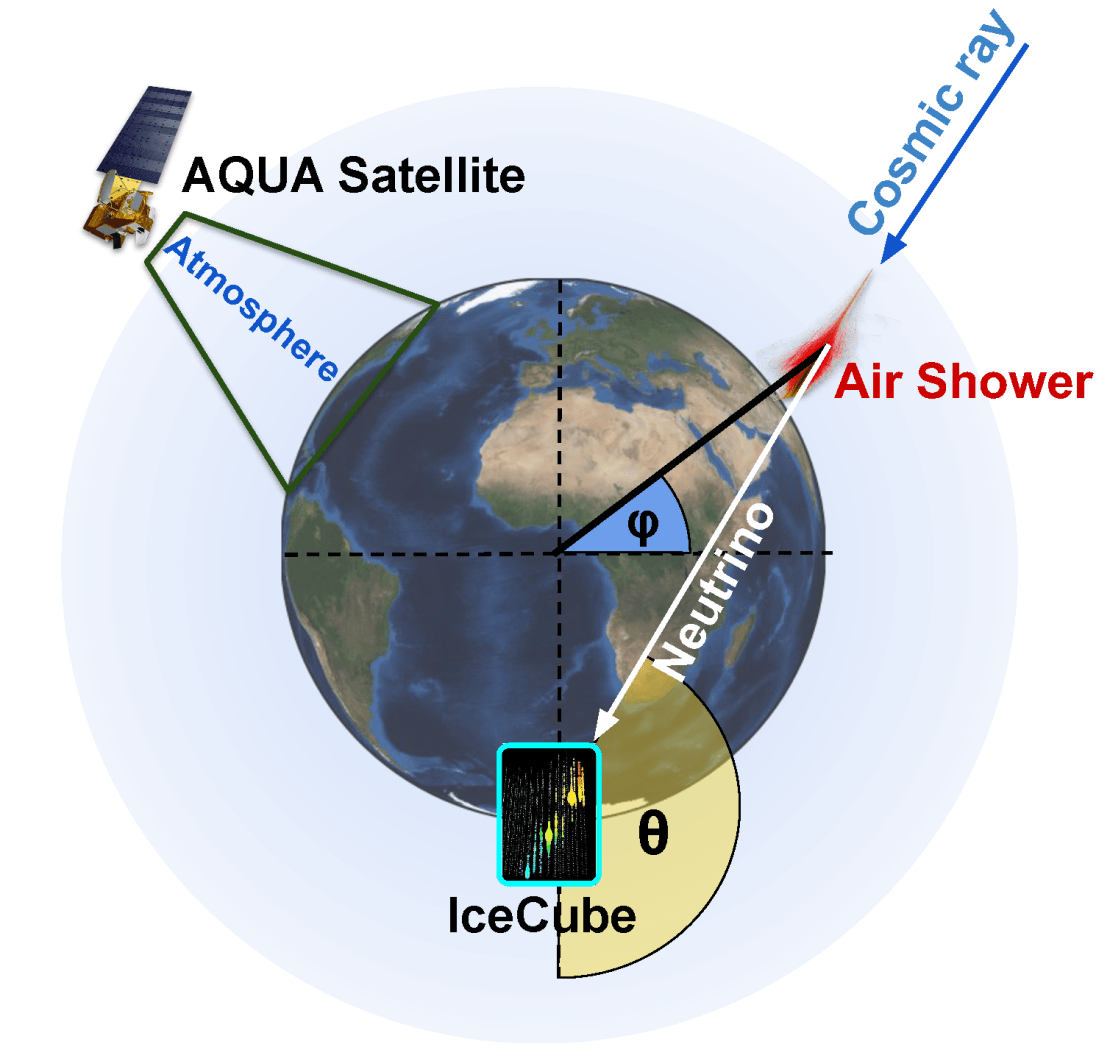Atmospheric muons and neutrinos are the most abundant signals detected in IceCube. They are produced in cosmic-ray-induced air showers in the Earth’s atmosphere. Cosmic rays are high-energy protons and heavier nuclei traveling through space. When these cosmic rays reach Earth and collide with atoms in the atmosphere, they create an avalanche-like cascade of secondary particles called an air shower. The production of atmospheric neutrinos and muons in high-energy particle interactions depends on the properties of the Earth’s atmosphere and, thus, its seasonal change in temperature. Although seasonal variations for atmospheric muons have been previously measured, this had not yet been achieved for atmospheric neutrinos.
In a paper submitted to The European Physical Journal C, the IceCube Collaboration investigated the temperature dependence of the atmospheric muon neutrino flux.
The collaborators report a significant observation of a correlation between the rate of neutrinos spanning gigaelectronvolt to petaelectronvolt energies detected by the IceCube Neutrino Observatory—a gigaton-scale neutrino detector operating at the South Pole—and atmospheric temperatures of the stratosphere. While at first glance these measurements establish IceCube as a gigantic atmospheric thermometer, they scientifically open a new view on the physics of high-energy particle interactions in air showers.

When a neutrino interacts with a molecule of ice in the detector, it creates a secondary charged particle that produces Cherenkov light, which is then picked up by the optical sensors. Scientists are then able to reconstruct each detected neutrino and determine its direction. To look at the temperature dependence of atmospheric neutrinos, the collaborators determined the atmospheric conditions for the respective time and direction of each neutrino event from a sample of 260,000 neutrinos detected by IceCube over a 6-year period. They also used a temperature dataset provided by the Atmospheric Infrared Sounder (AIRS) on NASA’s Aqua satellite, which provides daily coverage of the global distribution of atmospheric temperatures. The atmospheric neutrino rate measured by IceCube was then correlated with an average of the atmospheric temperature called effective temperature.
“We observed a highly significant correlation between the temperature and the neutrino rate, but at the same time there is a slight tension between these results and the results we expect from current air shower models,” says Jakob Böttcher, a physics PhD student at RWTH Aachen University and study lead. “We measured a 3.5% change in the atmospheric muon neutrino flux for the observed 10% seasonal change of the effective atmospheric temperature.”
Since this is the first measurement of the correlation of atmospheric temperature and neutrino flux, follow-up analyses are already being planned. Currently, an additional six years of IceCube data are being analyzed. The much larger, planned IceCube-Gen2 detector will increase the precision of future analyses by an unprecedented detection rate of atmospheric neutrinos.
+ info “Observation of Seasonal Variations of the Flux of High-Energy atmospheric νµ with IceCube,” IceCube Collaboration: R. Abbasi et al., The European Physical Journal C 83, 777 (2023), DOI:10.1140/epjc/s10052-023-11679-5, arXiv